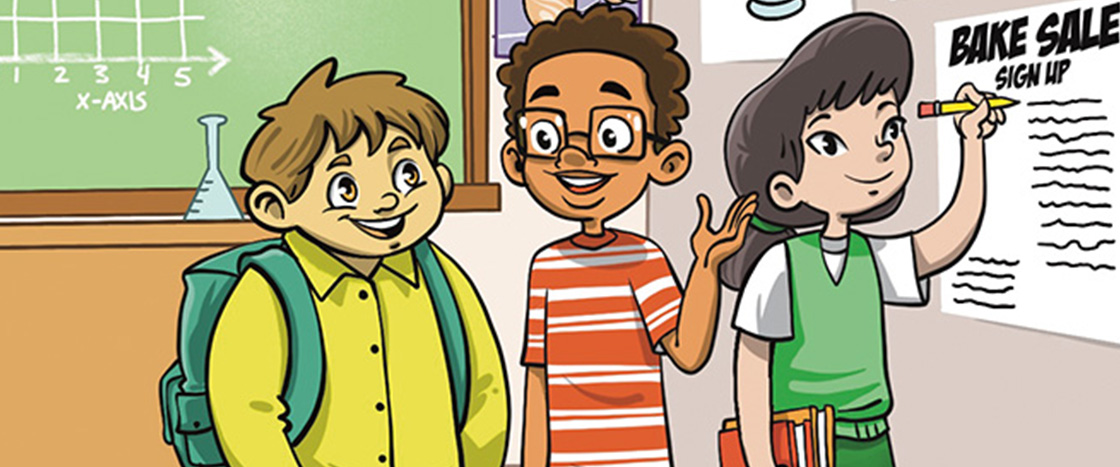The school day was almost over, and Ms. Vee was discussing the upcoming field trip to the science museum. As she spoke to the class, she taped a sheet of paper to the back wall.
“Remember, we’re holding a bake sale during lunch on Monday to raise money for the trip,” said Ms. Vee. “Sign up here for an item to bake.”
After class, several students crowded around the sign-up sheet.
“I want to make chocolate chip cookies,” Sadie told her friends Jason and Nico.
“Hey, I wanted to make those!” said Jason. “I guess I’ll make something else.”
“I think we all can make them,” said Sadie. “There are three types of chocolate chip cookies on this list—white chocolate chip, milk chocolate chip, and dark chocolate chip. I’ll take white.”
“Milk chocolate for me,” said Jason.
“That leaves me with dark chocolate,” said Nico. “But it’s not my favorite. It’s not as sweet.”
“Well, dark chocolate has the least milk and the most cocoa,” said Jason. “So it’s bittersweet.”
“And white chocolate has the most milk and the least cocoa in it,” said Sadie. “It’s so creamy.”
“That’s OK,” said Nico. “Making dark chocolate chip cookies just means I won’t eat any of my cookies before the bake sale!” Nico and his friends laughed.

